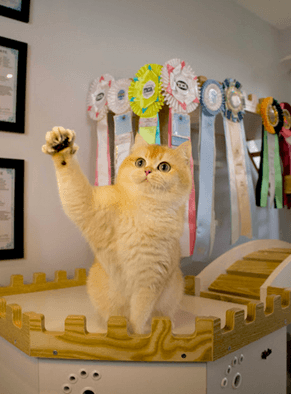Train My Cat? It's Not Pawsible, Right?
From: CatKing

Many cat owners believe that training a cat is impossible, often due to misconceptions about feline behaviour. However, the idea that cats can't be trained is a myth. With the right approach, cat training can be effective and rewarding. This guide will challenge the notion that training a cat is unfeasible and provide insights into effective methods for teaching your feline friend new tricks.
The Truth About Cat Training
Contrary to popular belief, cats are trainable. While they may not always respond to training in the same way dogs do, they can learn a variety of commands and behaviours. The key to successful cat training lies in understanding feline behaviour and employing techniques that cater to their unique characteristics.
Understanding Feline Motivation
One of the first steps in cat training is understanding what motivates your cat. Unlike dogs, who are often driven by praise or play, cats are usually motivated by food. Using treats as a reward can be a powerful motivator. Choose small, tasty treats that your cat loves and use them to reinforce positive behaviour.
Clicker Training for Cats
Clicker training is a popular method used in cat training and can be highly effective. This technique involves using a small device that makes a clicking sound to mark the exact moment your cat performs the desired behaviour. The click is followed by a treat, which helps your cat associate the action with a reward. Over time, your cat will learn to perform the behaviour to hear the click and receive the treat. Start with simple commands or tricks, such as “sit” or “high five.” Consistency and patience are essential. Clicker training sessions should be short, engaging, and fun for your cat to keep their attention.
Positive Reinforcement
Positive reinforcement is another effective technique for cat training. This method involves rewarding your cat immediately after they perform the desired behaviour. The reward can be a treat, praise, or playtime. It’s important to provide the reward right after the behaviour to help your cat make the connection between the action and the reward. Avoid using punishment or negative reinforcement, as these methods can lead to fear and anxiety, making training more difficult. Focus on encouraging and rewarding good behaviour to create a positive learning environment.
Training for Specific Behaviors
Cat training can be used to teach a variety of behaviours and tricks. For example, you can train your cat to use a litter box consistently, scratch designated areas, or perform simple tricks like “sit” or “rollover.” Start with one behaviour at a time and be patient. Cats may take a little longer to learn new behaviours compared to dogs, but with persistence and positive reinforcement, they can succeed.
Addressing Common Training Challenges
Training a cat may come with its own set of challenges. Some cats may be more independent or less responsive to training. If you’re facing difficulties, try breaking down the training process into smaller steps and using different types of rewards to find what works best for your cat. Remember that every cat is unique, and what works for one may not work for another.

Discover the joy of training your new kitten! CatKing Cattery, is a reputable and trusted British Longhair and British Shorthair cat breeder in Canada. Reach out to find out how you can buy a kitten in Toronto via our cattery and start your training journey today!
2024-09-29






